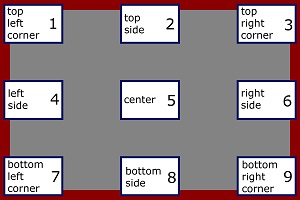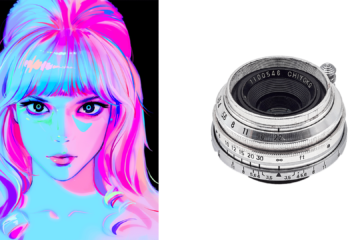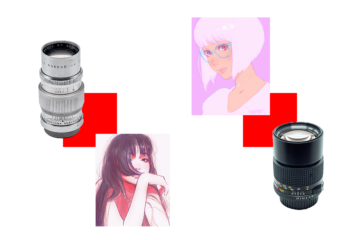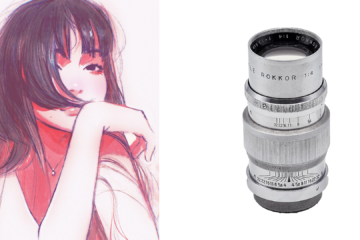Chiyoda Kogaku 50mm 1:1.8 – review

Chiyoda Kogaku 50mm 1:1.8 (Minolta) aka Chiyoda Kogaku Super Rokkor 1:1.8 f=5cm (Minolta) – Japan LTM/LSM/m39 – vintage manual lens test and review
This is the first lens that was designed by Minolta in the post-war style – all previous lenses look very similar to West Germany Leica or Carl Zeiss designs. So, this Chiyoda Kogaku has started the look which was continued by the SR-mount lenses up to the moment when rubberized focus rings came into the industry – up to the middle of 70′. And it looks like that this lens made a big jump in optical IQ.

Chiyoda Kogaku 50mm 1:1.8 specifications
| Name engraved on the lens | 5cm f/1.8 Chiyoda Kogaku Super Rokkor |
| f[mm] | 50 |
| A max [1/f] | 1.8 |
| A min[1/f] | 22 |
| Number of blades | 10 |
| Lens design [el.] | 6 |
| Lens design [gr.] | 5 |
| Filter thread Ø front(rear)[mm] | 46 |
| closefocus[m] | 1 |
| Max. diameter[mm] | 54 |
| Length min/max [mm] | 44 – 41 |
| Weight[g] | 260 |
More data
| Floating elements | NO |
| Serial | 1200154 |
| Confidence in the test results of reviewed copies | High |
- This lens was introduced in May 1958 (with new Minolta 35 Model IIB camera)
- This lens has an absolutely optically the same version for Minolta Super A mount.
- It has Minolta Achromatic Coating
- It has Planar (Double Gauss) -like optical design
- This tested lens arrived directly from Japan
- The optical and mechanical condition of this copy is very nice. There is nothing which can affect the images
- There are two ranges of serial numbers: first is like 120xxxx with the total amount of released lenses about 7500 units, and the second 130xxxx with 3000 units are produced. No real differences between these versions except serial numbers diapasons have been found
- The total amount of released lenses is about 10500, it means that the lens can be called as rare. But not very much actually, right now I see four lots on eBay, so, word ‘expensive’ in the description is better appropriate than ‘rare’
- The reviewed lens has serial 1200154, and for today it is earliest of all known copies in collectors lists (Many thanks to Andrea Apra`for details)
- One more: the feeling of this lens is better than it can be expected of the rangefinder lenses from later 1950-x – because it isn’t so ‘aluminum’ as some others. Not the same design as Serenars from 1951-1953 but also heavy. This body looks like a father of first Minolta SR-Rokkors – very solid, and a lot of people are fans of such things
- Super Rokkor 50mm 1:1.8 LTM weght
- Super Rokkor 50mm F1.8 optical design
Chiyoda Kogaku 50mm 1:1.8 exterior
Chiyoda Kogaku 50mm 1:1.8 sharpness
Сlose-distance resolution test, minimal distance
Testing methods description
- Target: 10-15 cm picture, printed on glossy photo paper
- Distance:10% longer than minimal focus distance marked on the lens
- Camera: Sony A7II (24mpx, full-frame, tripod, remote control). M-mode, ISO fixed, WB fixed, SteadyShot – OFF.
- The test was repeated for every F-stop on every focus position with manual focus adjustment for each shot. That is to avoid the effect of field curvature.
- RAW processing: Capture One, default settings. All quality settings – 100%. Crops – 300×200 px
Scene preview
Original target image (printed in horizontal orientation on 10cm X 15cm glossy photo paper)
Test results (selected version, easy to compare – 4 positions)
Test results (full version – all 9 positions)
Long-distance resolution test
Testing methods description
- Target: cityscape
- Distance: > 200 meters to center focus point
- Camera: Sony A7II (24mpx, full-frame, tripod, remote control). M-mode, ISO fixed, WB fixed, SteadyShot – OFF. The focus point is on the center only.
- RAW processing: Capture One, default settings. All quality settings – 100%. Crops – 300×200 px
Scene preview
Test results
Chiyoda Kogaku 50mm 1:1.8 aberrations
Vignetting
Geometric distortion
Coma aberrations
Additional image crop from F2.8:
Chromatic aberrations
Short-distance bokeh
Test conditions: lens was focused on minimal distance 1m, plants are in 3m distance from the camera
Long-distance bokeh
Test conditions: the lens was focused on half distance on the scale (2m), buildings are on “infinity”-distance. This is a rare case for real photography but demonstrates the maximum possible level of blur
Light bubbles bokeh – short-distance
Test conditions: lens was focused on minimal distance 1m of scale, diodes were fixed in 3m distance
Light bubbles bokeh – long distance
The lens is on the minimal focusing distance 1m, lights are on infinity (cityscape)
This is a rare case for real photography but demonstrates the maximum possible level of blur
Chiyoda Kogaku 50mm 1:1.8 – other resources with tests and reviews
Chiyoda Kogaku 50mm 1:1.8 – overall conclusion
Probably, this lens is a unique case: a classic LTM-lens with an IQ close to modern requirements
- This lens has a chance to be called as one of the best LTM fifty by technical abilities, as it has been noticed on some forums.
- Any 50mm SLR lens from 1970-x or later would be better in technical aspects with about 10x price difference. Don’t try to compare it with modern SLR lenses by technical aspects – this Super Rokkor doesn’t have a chance to be better from a sharpness or aberrations point of view.
- It is a popular target among collectors because of a rarity. It means that this lens is usually overpriced on auctions.
- If, for an unknown reason, a photographer with a mirrorless camera wants to purchase a Leica’like lens instead of a “common” DSLR-lens and to get the closest result for modern lenses by technical aspects – this lens will be a good choice.
- The lens looks really as ‘bokeh-monster’ – the rangefinder-style look is greatly presented on the photos. A very artistic combination between sharpness and bokeh.
- This lens would be nice in the role of a single universal lens in the photographer’s bag.
- The lens is ready for portraits wide open, became very good on F4, for landscapes it needs to be closed to F8.
- The difference between F1.8 and F2.0 can be seen with a microscope only.
- I didn’t present any flare-resistance tests yet, it is in plans for the future, but in real photography, I’ve felt that lens-shade is needed.
- Corners are sharper than the middle zone on close distances. On the long-distance everything as usual. Such behavior can be meet for some rangefinder lenses.
Of course, this lens is strongly recommended, but in case if it can be found for a reasonable price.



































1 Comment
Nicho · 2022-02-16 at 22:41
Only review of this specular lens on the Internet! Thank you!